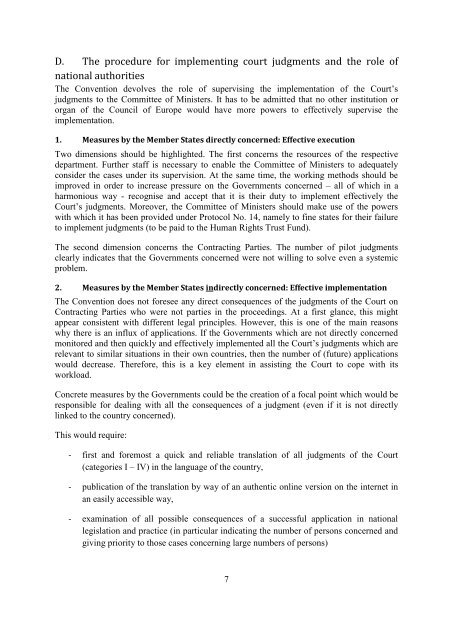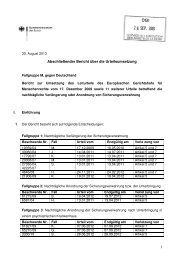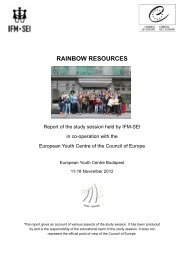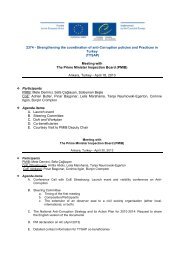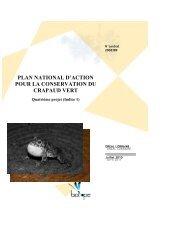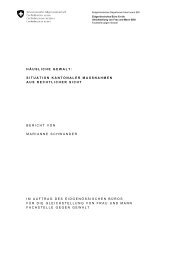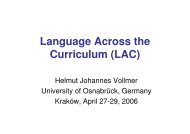Walter, Torsten - Council of Europe
Walter, Torsten - Council of Europe
Walter, Torsten - Council of Europe
Create successful ePaper yourself
Turn your PDF publications into a flip-book with our unique Google optimized e-Paper software.
D. The procedure for implementing court judgments and the role <strong>of</strong><br />
national authorities<br />
The Convention devolves the role <strong>of</strong> supervising the implementation <strong>of</strong> the Court’s<br />
judgments to the Committee <strong>of</strong> Ministers. It has to be admitted that no other institution or<br />
organ <strong>of</strong> the <strong>Council</strong> <strong>of</strong> <strong>Europe</strong> would have more powers to effectively supervise the<br />
implementation.<br />
1. Measures by the Member States directly concerned: Effective execution<br />
Two dimensions should be highlighted. The first concerns the resources <strong>of</strong> the respective<br />
department. Further staff is necessary to enable the Committee <strong>of</strong> Ministers to adequately<br />
consider the cases under its supervision. At the same time, the working methods should be<br />
improved in order to increase pressure on the Governments concerned – all <strong>of</strong> which in a<br />
harmonious way - recognise and accept that it is their duty to implement effectively the<br />
Court’s judgments. Moreover, the Committee <strong>of</strong> Ministers should make use <strong>of</strong> the powers<br />
with which it has been provided under Protocol No. 14, namely to fine states for their failure<br />
to implement judgments (to be paid to the Human Rights Trust Fund).<br />
The second dimension concerns the Contracting Parties. The number <strong>of</strong> pilot judgments<br />
clearly indicates that the Governments concerned were not willing to solve even a systemic<br />
problem.<br />
2. Measures by the Member States indirectly concerned: Effective implementation<br />
The Convention does not foresee any direct consequences <strong>of</strong> the judgments <strong>of</strong> the Court on<br />
Contracting Parties who were not parties in the proceedings. At a first glance, this might<br />
appear consistent with different legal principles. However, this is one <strong>of</strong> the main reasons<br />
why there is an influx <strong>of</strong> applications. If the Governments which are not directly concerned<br />
monitored and then quickly and effectively implemented all the Court’s judgments which are<br />
relevant to similar situations in their own countries, then the number <strong>of</strong> (future) applications<br />
would decrease. Therefore, this is a key element in assisting the Court to cope with its<br />
workload.<br />
Concrete measures by the Governments could be the creation <strong>of</strong> a focal point which would be<br />
responsible for dealing with all the consequences <strong>of</strong> a judgment (even if it is not directly<br />
linked to the country concerned).<br />
This would require:<br />
- first and foremost a quick and reliable translation <strong>of</strong> all judgments <strong>of</strong> the Court<br />
(categories I – IV) in the language <strong>of</strong> the country,<br />
- publication <strong>of</strong> the translation by way <strong>of</strong> an authentic online version on the internet in<br />
an easily accessible way,<br />
- examination <strong>of</strong> all possible consequences <strong>of</strong> a successful application in national<br />
legislation and practice (in particular indicating the number <strong>of</strong> persons concerned and<br />
giving priority to those cases concerning large numbers <strong>of</strong> persons)<br />
7


